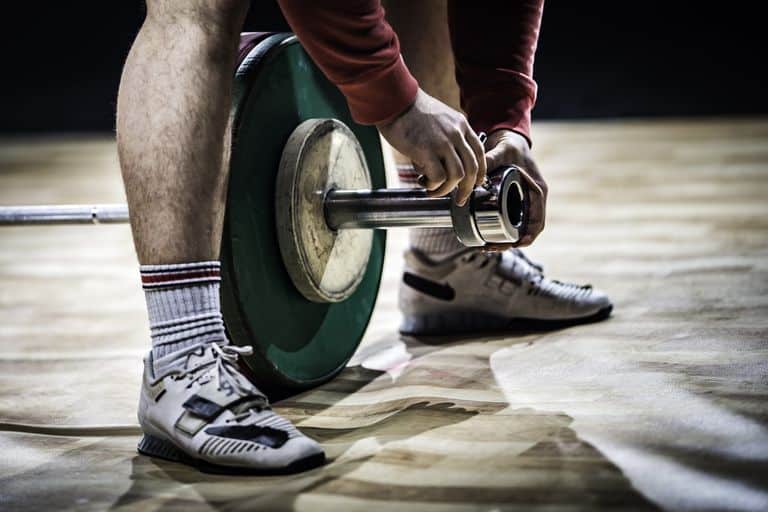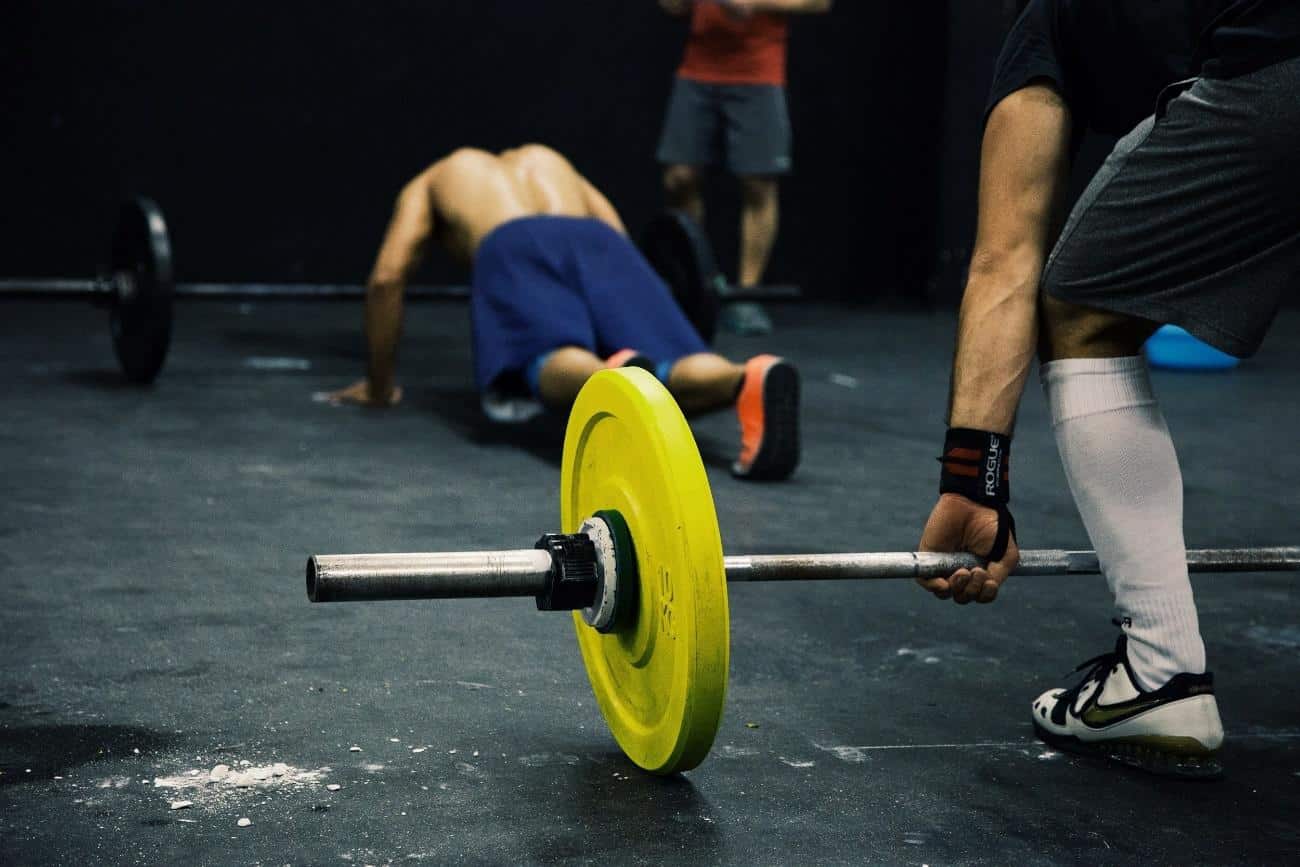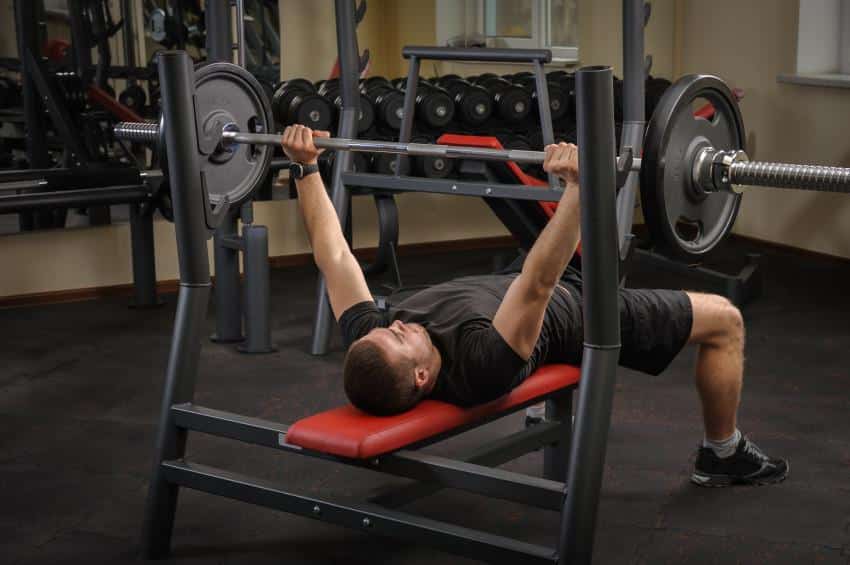18 de August de 2023
What Can Happen if I Aim For Resistance, But Using 1RM?
Training muscular strength is something common for high-performance athletes, bodybuilders, young individuals, and older adults. It’s becoming increasingly clear that in the world of fitness and physical training, a common goal for everyone is to improve muscular strength. This is because having good muscular strength is beneficial not only for weightlifters themselves but also for enhancing performance in other physical activities and sports (1).

To effectively train strength, there are certain variables that we need to control carefully. One of these variables, apart from training volume, is the intensity of the training. One way to control this intensity is by knowing your one-repetition maximum (1RM), which is commonly referred to as the maximum weight you can lift for a single repetition (2). Based on this weight, you work at a certain percentage of that weight. In other words, 1RM represents the maximum amount of weight a person can lift in a single effort in a specific exercise. While 1RM is a valuable tool for assessing strength, relying solely on its use can have significant implications.
In this article, we will attempt to develop a training plan in which the 1RM plays a significant role. It’s true that this variable is gradually becoming less prominent among trainers because it can be challenging to determine the 1RM for all exercises that will be performed, and alternative indicators of intensity must be sought, such as Vitruve’s linear encoder that measures execution speed. In today’s article, we will explore what happens when you aim for strength but use 1RM as the foundation for your training.
What’s 1RM and How can it be Determined?
As we’ve mentioned earlier, the 1RM is a common measure used in strength training to assess an individual’s maximum strength in a specific exercise. The 1RM for exercises like squats, deadlifts, and bench presses is typically well-known in a general sense.

But how is the 1RM calculated? There are specific protocols for measuring it, and we wanted to provide a basic guide so that you can assess it with your athletes (3). It’s worth noting that with the Vitruve system, only one set of the specific exercise needs to be performed to obtain an approximate value of the 1RM. As a premium tip, I’ll tell you that the closer the weight used is to the 1RM, the better the calculation the application can provide. That being said, to determine the 1RM, certain steps and precautions need to be followed to ensure safety and accuracy:
- Warm-up: Although often overlooked, this is a fundamental part of calculating the 1RM. Before attempting the 1RM, it’s essential to warm up properly to prepare the muscles and joints. Engage in light cardiovascular exercises, dynamic stretches, and incorporate warm-up sets.
- Warm-up sets, your great allies: Warm-up sets are sets of the specific exercise using light and moderate weights. Before starting any training, it’s advisable to perform these sets to familiarize yourself and signal to your body what’s to come. Do one or two sets with moderate weight and repetitions to prepare the body and refine the technique.
- Approaching the 1RM: After the warm-up and general approximation trials, the specific approximation phase follows. During this stage, you gradually get closer to the 1RM with fewer repetitions. For instance, if your 1RM is around 100 kg, these sets would be done with 90-95 kg for 2 repetitions.
- Attempt the 1RM: Based on the subjective sensations you’ve experienced while lifting 90-95% of the 1RM, you can estimate how much weight you can handle for the 1RM. Once determined, try to lift the maximum weight possible for a single repetition. Having the supervision of a coach or a partner is essential to ensure safety during the lift.
How to Use 1RM to Enhance Strength?
Due to the primary goal of strength training being to enhance the body’s ability to generate maximum force, using the 1RM as a reference for strength training can be beneficial in various aspects. Firstly, training with the 1RM and incorporating it into your workouts leads to a greater recruitment of motor units. According to literature, training with loads close to the 1RM requires higher motor unit recruitment, which means that more muscle fibers are activated to perform the lift. This can lead to improvements in strength and power.
Furthermore, using such heavy loads triggers what are often called “neural adaptations,” which are frequently overlooked in strength training due to their imperceptibility. Training near the 1RM can induce neural adaptations, such as enhanced synchronization among muscle fibers and improvements in neuromuscular coordination. In fact, this is one of the most significant benefits of training near the 1RM. However, as neural improvements aren’t as visible as muscle mass gains, the average gym-goer might not be familiar with them.
Lastly, training close to the 1RM can be advantageous because it allows for an increase in maximum strength. Within a training plan, enhancing maximum strength is one of the most crucial objectives. Using the 1RM as a reference for strength training can aid in elevating the body’s capacity to lift heavy loads and develop maximum strength.

However, as we mentioned earlier, we cannot utilize the 1RM for all exercises, as it would be impractical to calculate the RM for every exercise in the gym and there are certain exercises that cannot be accurately assessed using this method. An example of this is attempting to determine the 1RM for an alternate dumbbell bicep curl. It wouldn’t make sense to apply a very heavy load and try to move it just once, as other muscles are involved in the action and it could even lead to injury. In today’s article, we will explain several limitations associated with the use of the 1RM.
Limitations of Using 1RM
Despite the benefits mentioned earlier, relying solely on the 1RM as the primary reference for strength training can have several limitations. For example, it can pose a higher risk of injury. Why? Because consistently training with loads close to the 1RM can be dangerous, especially if the technique is not appropriate or if there isn’t sufficient time for recovery between training sessions or even between exercises within a single session. Furthermore, training near the 1RM places significant stress and fatigue on the neuromuscular system, which can negatively impact performance. It’s known that training with heavy loads results in greater central fatigue and requires longer recovery periods. Improper management of this training load can lead to overtraining.
Additionally, focusing solely on one aspect of strength is a mistake, just as it is to focus on a single capability. Strength training cannot be understood without cardiovascular training, and vice versa. Therefore, exclusive training with loads near the 1RM can neglect other crucial physical capacities, such as muscular and cardiovascular endurance. This is because the body specifically adapts to the stimuli it is exposed to. If the focus is solely on the 1RM, other important adaptations necessary for optimal performance in various physical activities might be overlooked.

What Should I Consider When Power Training Based on 1RM?
For effective strength training, it’s important to strike a proper balance between using the 1RM and other training strategies. That’s why you need to know when it’s crucial to incorporate training focused on the use of the 1RM. Within the training principles, there’s a concept called periodization that guides when to train one physical capacity versus another. Utilize periodization to plan your training in specific cycles. During certain cycles, focus on training with heavy loads near the 1RM to develop maximum strength, while in other cycles, shift your focus to moderate loads and higher repetitions.
On the other hand, changing exercises regularly is vital if you aim to develop a well-rounded and strong athlete. The principle of variability not only promotes better strength but also prevents athletes from becoming bored. Incorporate a variety of exercises, repetitions, and sets into your training program. This approach allows the body to adapt more comprehensively and prevents overexposure to heavy loads. If there’s a point in your plan where you notice a strain on the body (easily recognizable by a decline in performance), make sure to provide your muscles ample time to recover between training sessions. Adequate rest is essential to prevent injuries and allow muscles to repair and grow.
Calculating 1RM Through VBT (Velocity-Based Training)
As mentioned at the beginning of this article, one way to work with the 1RM is by using the Vitruve system. When you perform a set with the Vitruve system, you obtain the meters per second at which the barbell moves, as well as an estimation of the 1RM. This means that when the weight you’re using closely matches the value indicated by the device, you’re working with heavy resistance. The advantage of the Vitruve system is that it also provides the velocity at which you’re moving that load, which can be beneficial to the athlete for two main reasons:
- If the athlete manages to lift the same weight but faster over time, it signifies that adaptations are becoming evident.
- With daily evaluations for each repetition of their 1RM, they can fine-tune the load more effectively and tailor it to each training session.
When we measure the 1RM, we assess it on a single day and estimate that it might increase by 5% after 4 weeks or 10% if the athlete has just started the mesocycle. However, this calculation inherently contains a flaw. Moreover, over time, it’s necessary to reevaluate and measure the 1RM again to adjust the loads accurately.
With the Vitruve system, this need is eliminated as you’ll have the estimated 1RM for every set performed by the athlete.
Conclusion
As mentioned at the beginning of this article, one way to work through the 1RM in strength training is an essential component of any fitness program, but its implementation should be strategic and well-balanced. Using the 1RM as a reference for strength training can be beneficial for developing maximum strength and enhancing performance in heavy lifts. However, exclusive focus on the 1RM can come with certain limitations and associated risks.
To conclude, I’d like to emphasize the significant role that VBT (Velocity-Based Training) plays. Velocity-based training provides us with objective performance and 1RM data. By utilizing VBT, athletes can fine-tune training load more accurately, avoiding training above or below their actual capacities and enabling optimal progression. Compared to a more traditional and subjective 1RM calculation system, VBT offers greater precision and objectivity in the training process.
Furthermore, by analyzing bar velocity, fatigue can be detected and progress can be monitored over time, allowing for adjustments to prevent injuries and optimize performance. In summary, VBT enhances informed decision-making and precise training adaptation. It’s a valuable tool that complements the work of coaches and maximizes the potential of powerlifters.
Unai Adrián Pérez de Arrilucea Le Floc’h
References
- Desgorces FD, Berthelot G, Dietrich G, Testa MS. Local muscular endurance and prediction of 1 repetition maximum for bench in 4 athletic populations. The Journal of Strength & Conditioning Research. 2010;24(2):394-400.
- Thomas GA, Kraemer WJ, Spiering BA, Volek JS, Anderson JM, Maresh CM. Maximal power at different percentages of one repetition maximum: Influence of resistance and gender. The Journal of Strength & Conditioning Research. 2007;21(2):336-42.
- Grgic J, Lazinica B, Schoenfeld BJ, Pedisic Z. Test–retest reliability of the one-repetition maximum (1RM) strength assessment: a systematic review. Sports medicine-open. 2020;6(1):1-16.

